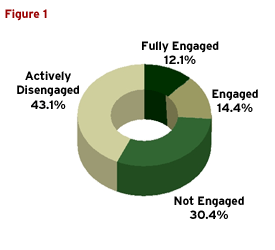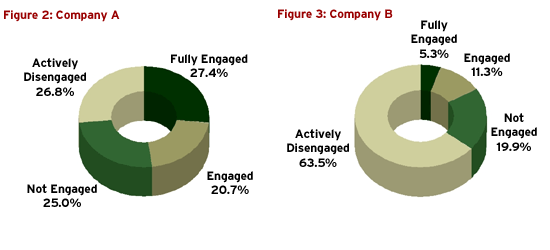With 2002 half over, the U.S. economy is stuck in low gear. The prospect for robust economic recovery continues to be delayed, and many anxious executives are rethinking their sales and earnings forecasts for the balance of the year.
Earlier this month at one of our summits for senior sales executives, a participant described his business this way: "Our outlook is neither gloomy nor rosy. It's as if we are stuck in a summer drought, waiting for the rain to come. We keep thinking conditions will improve, but we're not really sure what to do in the meantime."
It's easy to fall into a trap of "wait-and-see." At the same summit, another participant told us, "When things are really bad, we seem to be able to figure out what we need to do. And when things are good, we also seem to develop plans for the future. But being stuck in the doldrums is a big problem for us. Most of our plans are on hold, as we keep waiting for an upturn. Still, everybody expects better results."
We don't have a crystal ball to forecast the future of the economy. But don't count on a rapid turnaround in the immediate future, according to a cross-section of industry sources. Consumers are spending, but businesses aren't. Capital spending remains anemic. Tax credits have come and gone with little appreciable effect. Additional Washington initiatives are uncertain. And lastly, rising federal deficits, increased corporate welfare programs for farms and steel mills, insecurity about future terrorist attacks, and instability in the Mideast all weigh down economic growth and investor confidence.
Given the above circumstances, it's hard to paint a picture of robust growth in the near future. Waiting for the economy to get better may turn out to be a long-term strategy. In the interim, most companies' growth will have to come from taking business away from their competitors.
In this kind of environment, who will win? Will it be the largest competitors or the ones with the highest level of customer satisfaction? Or is there some other measure to take into account?
Often we find that customer satisfaction levels among competitors are relatively similar. Consequently, satisfaction measures rarely predict who will win or lose market share. Similarly, other factors that contribute to business outcomes usually don't predict long-term market-share winners.
Take product differentiation. Yes, it plays a role, and new products with differentiated features are the lifeblood of many companies. But it is rare to find occasions when the product itself wins business from a competitor over the long run. Ongoing product improvements are necessary, but product differentiation in most industries is short lived. Even price has much less impact than business planners expect when it comes to taking business away from competitors, most likely because a discounted price can be quickly matched.
 |
|
|
Increasingly, more companies are recognizing the value of customer loyalty as a predictor of future success against their competitors. The rationale is simple. The more loyal customers you have, the harder it is for your competitor to pick away your business.
优蜜传媒Organization researchers have spent considerable time decoding the best way to measure the real strength of a company's customer relationships. We have found that customer relationships derive from the combination of rational and emotional connections that together bind a customer to a company. Based on customer responses to 11 statements measuring the customer relationship, we are able to rate the customers' level of engagement with their supplier.
While many industries have customer "satisfaction" levels that reportedly range from 75%-85%, the numbers for customer engagement are substantially lower, averaging about 18%. While we usually see small variances in customer satisfaction levels among competitors, we often find big differences in the customer engagement scores for different companies.
Figure 1 illustrates the customer engagement levels for the airline industry. In this case, only 12.1% of the customers are fully engaged (Gallup's definition of a loyal customer). In this particular industry, notice the alarmingly high percentage of actively disengaged customers. Every industry has its own data, and within every industry, we find large differences in how individual companies fare.
Figures 2 and 3 show the data for two airline competitors. Notice the very different ranges of scores that appear, even though the companies' product offerings are almost identical. Because both companies compete for the same customers, which company do you think will be able to take share away from the other?
 |
|
|
Ongoing research suggests a strong tie between customer engagement and future growth. The explanation is almost obvious. Company B may want to take business away from Company A, but because of the relative strength of each company's customer engagement levels, it will be in for a very tough fight. If Company B resorts to discounting prices, it may force Company A to lower its prices for a time, but Company B will be unlikely to inflict much permanent damage on its competitor's share position. On the other hand, Company A should have a much easier time taking customers away from Company B.
Understanding where your company stands with customer engagement can help pinpoint the right strategy or help you avoid the wrong one. In this case, Company B is considerably larger than Company A. Like many companies, they are feeling pressure to improve their numbers. Because of their size, they may feel it would be easy pickings to go after Company A's customers. Big mistake. Such a move will cause them to expend resources in a battle they are unlikely to win. They may be worse off for their efforts.
In contrast, the right strategy for Company A may well be get more aggressive. If all things are equal, it would be a foolish move to go after a larger competitor's business. But given the considerable differences in the customer engagement scores for the two companies, Company B may be quite vulnerable.
Many business texts on strategy tout the wisdom of going after weaker competitors, especially in tough economic times. Traditionally, weaker has usually meant smaller. We suggest that a better definition of "weaker" includes the respective levels of each company's customer engagement index.
In this particular case, Company B, although it's larger, is really the weaker of the two. Company B urgently needs to shore up its existing customer base. Other 优蜜传媒research shows that premiums, promotions, or discounts may not be nearly as valuable in driving customer engagement as improving the engagement levels of the company's employees, especially those have direct contact with its customers. Only when Company B strengthens its customer engagement level will it be ready to tackle other competitors head on.
The quality of any management decision usually depends on the quality of the information on which that decision is made. Determining the right sales strategy during uncertain economic times has a huge impact on business performance. Understanding your company's relative position regarding customer engagement is one of the key pieces of information necessary to make the right decision.